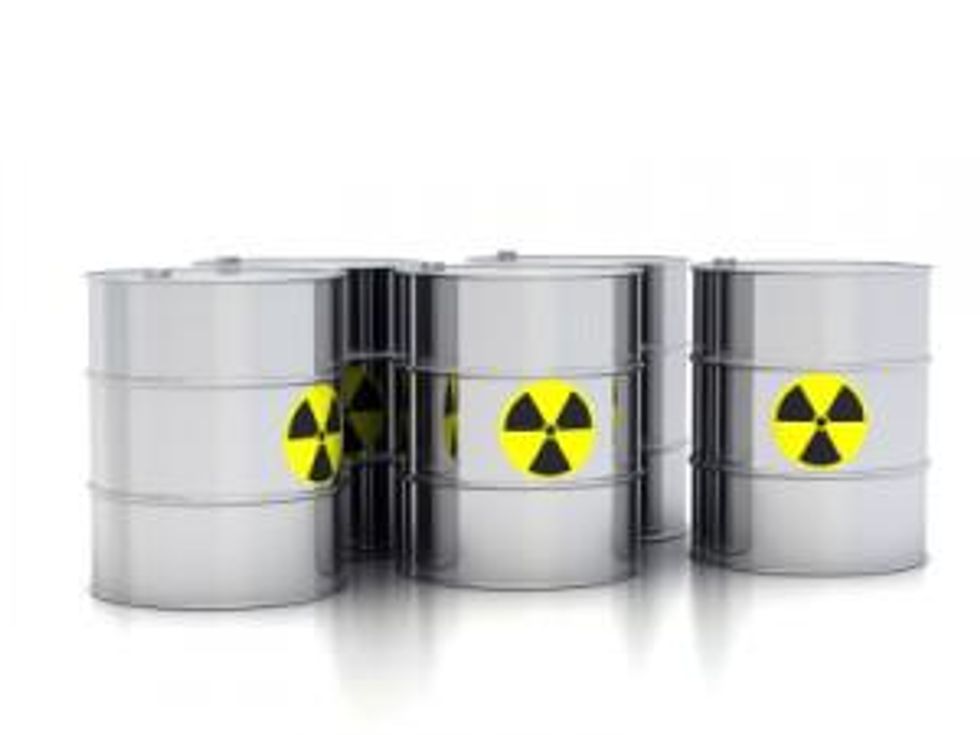Suspended: 7 Percent of Global Uranium Supply for 2014 Following Unexpected Spills
It’s been a rough week for Rio Tinto, and it looks like the unexpected supply halts are taking a chunk out of uranium supply going forward.
The first incident occurred on December 3, when one of the 12 leaching tanks at the Rossing processing facility in Namibia experienced what is being called a “catastrophic structural failure,” resulting in a large quantity of radioactive slurry being spilled.
While it is unknown how much slurry was spilled in the Rossing incident, Rio did admit that some employees were treated for “minor” injuries. Even so, the company also said that the spill has thus far resulted in no environmental impact.
The second incident occurred less than a week later when a worker at Rio’s subsidiary, Energy Resources of Australia (ASX:ERA), reported that a leaching tank had failed at the Ranger uranium mine in Australia, leaking roughly 1 million liters of highly acidic uranium slurry.
Though ERA maintains that containment systems at the mine will prevent the slurry from escaping into the surrounding Kakandu National Park, local groups remain skeptical and angry.
The Australian government has suspended all processing operations at Ranger since the announcement, and Industry Minister Ian Macfarlane has told ERA that it cannot resume processing activities until it has demonstrated the integrity of the plant to regulators.
In response, ERA’s general manager of operations, Tim Eckersley, said that “ERA is focussing on clean up and recovery, and the protection of the environment and the health and safety of our people remains paramount.”
Environmentalists concerned
“It’s the same company, same mineral, same piece of infrastructure,” Dave Sweeney of the Australian Conservation Foundation said, “This copycat incident shows there is a serious structural issue here and that the halt on processing at Ranger should not be lifted.”
Speaking to The Australian, Greens Senator Scott Ludlam also commented on the incidents’ similarities, highlighting that “Rossing opened in 1976, Ranger in 1981 — both of these mines are aging and failing.”
Similarly, in a research note to clients, Cantor Fitzgerald analyst Rob Chang wrote that it likely isn’t just coincidence that both uranium production facilities experienced nearly identical issues.
Chang argues that uranium producers could potentially be delaying costly maintenance programs due to the low prices currently inhabiting the market.
“While this can be viewed as a criticism of the producer in question,” he said, “we highlight that we are already in a fundamental primary supply deficit with the spot price below the current marginal cost of production ($40/lb) and substantially below the minimum long-term equilibrium price of $70/lb.”
Market effects
The unexpected supply halt due to the suspension of activities at Ranger and Rossing is going to put a cap on roughly 7 percent of 2014 global uranium supply, Chang said in his note.
In a market that is already showing signs of a demand-driven future, the loss of an estimated 12 million pounds of U3O8 will be added to an environment already being driven by demand and lack of primary mine supply. Cantor Fitzgerald is continuing to forecast supply deficits in the coming two to five years, with a large, unavoidable deficit slated for 2019.
As for spot prices, U3O8 has come down slightly from its previous spot price of $36 per pound. UxC consulting is reporting spot prices down at $34.75 per pound as of December 9.
Securities Disclosure: I, Vivien Diniz hold no direct investment interest in any company mentioned in this article.






